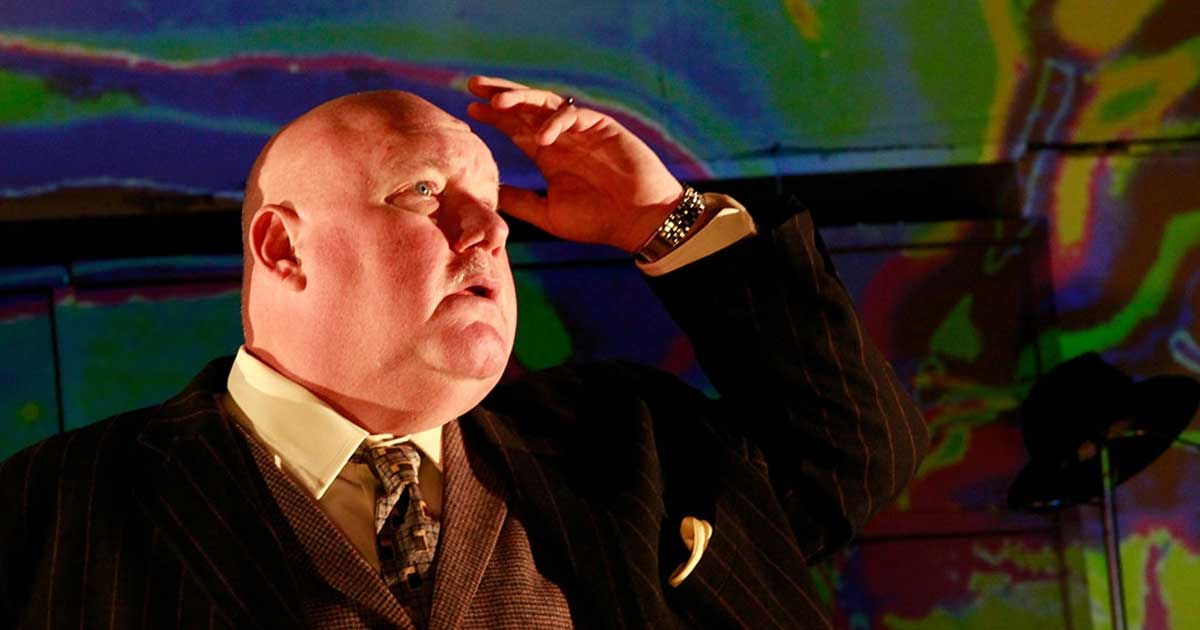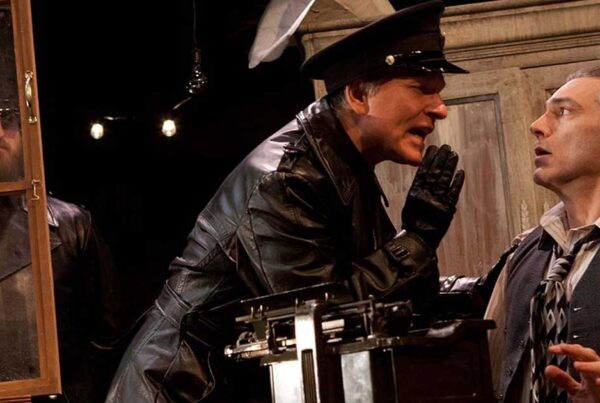
Pittsburgh Quarterly – A review of Quantum’s “The Man Who Mistook His Wife for a Hat”.
Nietzsche famously castigated Euripides for killing the tradition of the chorus in Greek tragedy, because the audience no longer had music to inform its comprehension. He even felt that Euripides caused the death of tragedy itself by trying to make it too Socratic, too rational.
“The Man Who Mistook His Wife for a Hat” might be the ultimate vindication for Nietzsche, especially as performed by Quantum Theatre, which has created a new and stunning kind of multi-media chorus that he would have loved (and Socrates would have hated).
Based on the book by neurologist Oliver Sacks, this 1986 opera tells the story of Sacks’ encounter with a special case, referred to as Dr. P—a music professor and painter— who suffers from visual agnosia, a neurological condition of optical impairment which causes him to perceive the world aurally. As the Sacks character, called Dr. S, observes, “He looked at me with his ears not with his eyes.”
That the English composer Michael Nyman had the idea to turn this case history into an opera is a brilliant conceit, for what better way to tell the story of a man who literally sings in order to see, than via the motif of song?
Musical director Andres Cladera does an excellent job guiding the seven-person orchestra—comprising wind instruments, harp and piano—through the driving, minimalist score, based on works by Robert Schumann. The music has the repetitive feel of a Philip Glass composition and complements the streaming video montage projected on six screens behind the stage. The whole effect is mesmerizing, with the libretto projected above the images, so that what you are seeing and reading and hearing becomes a kind of three-dimensional experience, until eventually you also find yourself “looking with your ears.”
As if this is not enough stimulation, Artistic Director Karla Boos creates even more sensory layers, for example mounting a GoPro-style camera on Dr. S’s head as he examines his subject—showing us what he sees—and conjuring point-of-view visualizations for Dr. P, which give us some idea of the surreal lens through which he encounters his life. This phantasmagoria works because Boos keeps the action simple, just as every child knows that when you gaze into a kaleidoscope you always focus on something still. And Britton Mauk’s elementary set anchors what otherwise might become an overwhelming chaos of imagery.
Ian McEuen plays Dr. S, the Sacks character, with a voice that is both confident and full of the wonder of discovery. Kevin Glavin, as the subject, Dr. P, encompasses the range between jubilance and pathos his character must convey, with a masterful sense of delivery. And Katy Williams, as his wife Mrs. P, is also strong in a role forced to mediate the realizations that there is something wrong with her husband, and that what is wrong with him is also what makes him right.
It would be easy for a production of this opera to just let the music do the work, but Boos, Projection Designer Joe Seamans, and Lighting Designer Andrew Ostrowski take the bolder gambit of illustrating the perception of a man who actually lives in the realm of metaphor: where faces don’t look like faces but like disjointed shapes. We see this through projections of Dr. P’s paintings over time, which start out as realistic, then evolve into cubist, impressionist, abstract, and finally color field depictions. It’s like learning the history of art from a man whose eyes are melting.
Comparable to a blind person tapping his cane, Dr. P sings to navigate his existence with a kind of melodic sonar. Even the simple task of putting on his shoes requires a song. Although this might seem like a sad coping mechanism, it should be noted that there are not only many animal species, but entire human cultures that adopt this ethos by choice. In fact, for the Aboriginal Australians, creating and reciting Songlines became an essential means of survival—as well as a religious and artistic joy—when traversing the vast barren stretches of their inhospitable land.
What we come away with is neither sad nor didactic, but rather, self-revelatory, as Dr. S, remarks, “My prescription is more music.” This is hardly a tragic note to end upon, whether you agree with him or not. In either case, Quantum brings off a provoking theatrical and operatic experience, which should be seen as well as heard.




